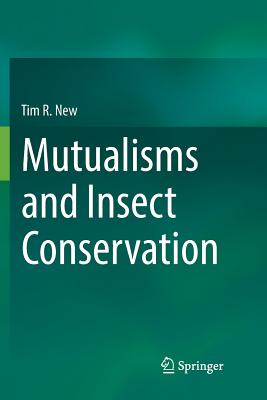Remote Sensing and GIS for Ecologists: Using Open Source Software (Paperback)
暫譯: 生態學家的遙感與地理資訊系統:使用開源軟體 (平裝本)
Martin Wegmann, Benjamin Leutner, Stefan Dech
- 出版商: Pelagic Publishing
- 出版日期: 2016-02-01
- 售價: $2,120
- 貴賓價: 9.5 折 $2,014
- 語言: 英文
- 頁數: 324
- 裝訂: Paperback
- ISBN: 1784270229
- ISBN-13: 9781784270223
-
相關分類:
地理資訊系統 Gis
海外代購書籍(需單獨結帳)
買這商品的人也買了...
-
 $875The Document Object Model: Processing Structured Documents
$875The Document Object Model: Processing Structured Documents -
 Effective C++, 3/e (中文版) (Effective C++: 55 Specific Ways to Improve Your Programs and Designs, 3/e)
Effective C++, 3/e (中文版) (Effective C++: 55 Specific Ways to Improve Your Programs and Designs, 3/e)$500$450 -
 大話設計模式
大話設計模式$620$527 -
40 條彩色排線 20cm 公對母
$100$95 -
 Adafruit Perma-Proto Quarter-sized Breadboard PCB (3 Pack)
Adafruit Perma-Proto Quarter-sized Breadboard PCB (3 Pack)$325$309 -
 ASP.NET MVC 5 網站開發美學
ASP.NET MVC 5 網站開發美學$780$616 -
 Effective Modern C++: 42 Specific Ways to Improve Your Use of C++11 and C++14 (Paperback)
Effective Modern C++: 42 Specific Ways to Improve Your Use of C++11 and C++14 (Paperback)$2,300$2,185 -
 $1,615Cracking the Coding Interview : 189 Programming Questions and Solutions, 6/e (Paperback)
$1,615Cracking the Coding Interview : 189 Programming Questions and Solutions, 6/e (Paperback) -
 USB轉TTL序列埠模組
USB轉TTL序列埠模組$80$76 -
 精通 Python|運用簡單的套件進行現代運算 (Introducing Python: Modern Computing in Simple Packages)
精通 Python|運用簡單的套件進行現代運算 (Introducing Python: Modern Computing in Simple Packages)$780$616 -
 完整學會 Git, GitHub, Git Server 的24堂課
完整學會 Git, GitHub, Git Server 的24堂課$360$284 -
 Raspberry Pi 樹苺派官方 7吋 Display 10 指電容式觸控顯示器 (附壓克力支架)
Raspberry Pi 樹苺派官方 7吋 Display 10 指電容式觸控顯示器 (附壓克力支架)$2,950$2,950 -
 Python 程式設計實務-從初學到活用 Python 開發技巧的16堂課
Python 程式設計實務-從初學到活用 Python 開發技巧的16堂課$560$437 -
 Docker 錦囊妙計 (Docker Cookbook)
Docker 錦囊妙計 (Docker Cookbook)$680$537 -
 HTML5 ‧ CSS3 最強圖解實戰講座
HTML5 ‧ CSS3 最強圖解實戰講座$480$408 -
 網站擷取|使用 Python (Web Scraping with Python: Collecting Data from the Modern Web)
網站擷取|使用 Python (Web Scraping with Python: Collecting Data from the Modern Web)$580$458 -
 $976Designing UX: Forms: Create Forms That Don't Drive Your Users Crazy
$976Designing UX: Forms: Create Forms That Don't Drive Your Users Crazy -
 網頁就是這麼疊出來的!企劃與設計人員都該懂的版型X模組X樣式設計架構
網頁就是這麼疊出來的!企劃與設計人員都該懂的版型X模組X樣式設計架構$380$300 -
 王者歸來:Python 在大數據科學計算上的最佳實作
王者歸來:Python 在大數據科學計算上的最佳實作$860$731 -
 iOS 10 程式設計實戰 - Swift 3 + Apple Watch 快速上手的開發技巧200+
iOS 10 程式設計實戰 - Swift 3 + Apple Watch 快速上手的開發技巧200+$540$427 -
 寫給 PM、UX 與企劃人員看的設計方法-打造使用者喜愛的創新產品與服務設計 (101 Design Methods: A Structured Approach for Driving Innovation in Your Organization)
寫給 PM、UX 與企劃人員看的設計方法-打造使用者喜愛的創新產品與服務設計 (101 Design Methods: A Structured Approach for Driving Innovation in Your Organization)$650$514 -
 高效率資料分析|使用 Python (Foundations for Analytics with Python)
高效率資料分析|使用 Python (Foundations for Analytics with Python)$580$458 -
 Yocto for Raspberry Pi : 打造 IoT 與嵌入式系統
Yocto for Raspberry Pi : 打造 IoT 與嵌入式系統$380$300 -
 Git 團隊使用手冊 (Git for Teams: A User-Centered Approach to Creating Efficient Workflows in Git)
Git 團隊使用手冊 (Git for Teams: A User-Centered Approach to Creating Efficient Workflows in Git)$580$458 -
 React 啟動與運行 (React: Up & Running: Building Web Applications)
React 啟動與運行 (React: Up & Running: Building Web Applications)$580$458
商品描述
This is a book about how ecologists can integrate remote sensing and GIS in their daily work. It will allow ecologists to get started with the application of remote sensing and to understand its potential and limitations. Using practical examples, the book covers all necessary steps from planning field campaigns to deriving ecologically relevant information through remote sensing and modelling of species distributions.
All practical examples in this book rely on OpenSource software and freely available data sets. Quantum GIS (QGIS) is introduced for basic GIS data handling, and in-depth spatial analytics and statistics are conducted with the software package R.
Readers will learn how to apply remote sensing within ecological research projects, how to approach spatial data sampling and how to interpret remote sensing derived products. The authors discuss a wide range of statistical analyses with regard to satellite data as well as specialised topics such as time-series analysis. Extended scripts on how to create professional looking maps and graphics are also provided.
This book is a valuable resource for students and scientists in the fields of conservation and ecology interested in learning how to get started in applying remote sensing in ecological research and conservation planning.
more details on
book.ecosens.org/
All practical examples in this book rely on OpenSource software and freely available data sets. Quantum GIS (QGIS) is introduced for basic GIS data handling, and in-depth spatial analytics and statistics are conducted with the software package R.
Readers will learn how to apply remote sensing within ecological research projects, how to approach spatial data sampling and how to interpret remote sensing derived products. The authors discuss a wide range of statistical analyses with regard to satellite data as well as specialised topics such as time-series analysis. Extended scripts on how to create professional looking maps and graphics are also provided.
This book is a valuable resource for students and scientists in the fields of conservation and ecology interested in learning how to get started in applying remote sensing in ecological research and conservation planning.
more details on
book.ecosens.org/
商品描述(中文翻譯)
這是一本關於生態學家如何在日常工作中整合遙感技術和地理資訊系統(GIS)的書籍。它將幫助生態學家開始應用遙感技術,並理解其潛力和限制。透過實際範例,本書涵蓋了從規劃實地調查到通過遙感和物種分佈建模獲取生態相關資訊的所有必要步驟。
本書中的所有實際範例均依賴於開源軟體和免費可用的數據集。Quantum GIS(QGIS)被介紹用於基本的GIS數據處理,而深入的空間分析和統計則使用R軟體包進行。
讀者將學習如何在生態研究項目中應用遙感技術,如何進行空間數據取樣,以及如何解釋遙感衍生的產品。作者討論了與衛星數據相關的各種統計分析,以及時間序列分析等專門主題。還提供了如何創建專業外觀地圖和圖形的擴展腳本。
這本書是對於有興趣學習如何開始在生態研究和保育規劃中應用遙感技術的學生和科學家們的寶貴資源。
更多詳情請參見
book.ecosens.org/






























